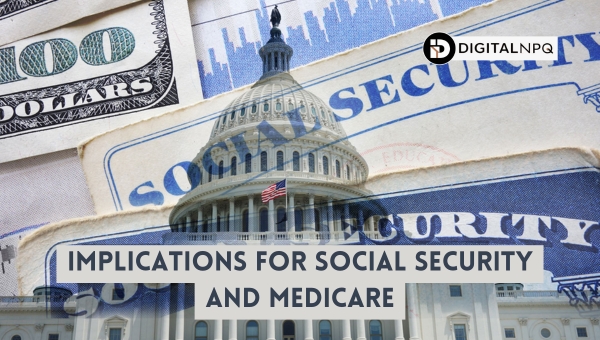How the Cost of Living Wage Increase 2024 Impacts You!

The cost of living wage increase for 2024 is a response to economic conditions that affect the average worker’s ability to afford basic needs. This increase covers adjustments to the national living wage and company-driven salary boosts.
For example, the national living wage in the UK will rise from £10.42 to £11.44 per hour starting in April 2024, impacting nearly three million workers. This change is intended to help wages keep up with inflation and the rising cost of living.
The Reasons Behind the Wage Increase
Several elements contribute to the anticipated wage increases in 2024. These include inflation rates, labor market conditions, and government policies focused on improving worker compensation.

Employers are also planning salary increases that reflect both merit and cost-of-living adjustments.
Wages vs. Inflation
Wage increases are often compared to inflation to determine if workers are genuinely benefiting from raises. In 2024, average wage increases are expected to be around 3.5% to 3.9%, while inflation is slightly above 3%.
This suggests that many workers may see real gains in their purchasing power, although some raises may still fall short of fully covering inflation. Here’s how they connect:
- Inflation Rate: Slightly above 3%
- Average Wage Increase: 3.5% to 3.9%
- Potential Gains: Real gains in purchasing power for many workers
Are Inflation Raises Mandatory?
Employers are not legally required to provide raises based on inflation, but many choose to do so to attract and retain talent. The decision to implement cost-of-living adjustments varies by company and is influenced by competitive labor market conditions.
While some businesses may opt to raise wages in line with inflation, others might not, leading to disparities in employee compensation across sectors.
- Legal Requirement: No
- Employer Choice: Influenced by market conditions
- Result: Disparities in compensation across sectors
Regional Differences in Wage Adjustments
Understanding how the cost-of-living wage increase for 2024 varies by region is crucial. Let’s explore the major changes expected in specific cities and states, and the potential additional adjustments that may occur throughout the year.
Major Changes in Cities and States
Certain cities and states are expected to see significant changes in wages.
Here are some noteworthy examples:
- California: Known for its high cost of living, California is slated to implement considerable increases in the minimum wage.
- New York: Similar to California, New York is also expected to raise its minimum wage to align with the local economic conditions.
- London: In the UK, London will likely see more substantial wage increases compared to other regions, given its higher living costs.
- Washington State: This state is also preparing to adjust its minimum wage to better support its workforce.
Expected Additional Adjustments in 2024
Throughout the year, additional wage adjustments may be necessary to keep up with ongoing economic changes.
Here are some possible scenarios:
- Legislation Changes: New laws could be passed that mandate further wage increases.
- Collective Bargaining Agreements: Unions may negotiate additional raises for their members.
- Market Demand: Shifts in the labor market might prompt employers to offer higher wages to attract and retain talent.
- Economic Indicators: Changes in inflation rates or other economic indicators could lead to further adjustments.
Understanding these potential changes can help both employers and employees prepare for the evolving economic landscape.
Historical Context and COLA Adjustments
Understanding the history of cost-of-living adjustments (COLA) helps us see how these changes have evolved over time.
Let’s delve into some key historical adjustments since 1975 to better grasp this concept.
Key Historical Adjustments Since 1975
Since 1975, the government has made several significant changes to COLA to ensure that Social Security and Supplemental Security Income (SSI) benefits keep pace with inflation.
Here are some noteworthy adjustments:
- 1975: The first automatic COLA was put into effect with an 8.0% increase.
- 1980: A massive adjustment of 14.3% was implemented due to high inflation rates.
- 2009: No COLA was given, reflecting a rare period of low inflation.
- 2012: A 3.6% increase was introduced after a two-year gap with no adjustments.
- 2021: The COLA saw a 1.3% rise, reflecting modest inflation.
- 2022: A significant 5.9% hike was applied, responding to higher inflation rates.
Each of these adjustments reflects the economic conditions of their time and the government’s commitment to maintaining the purchasing power of benefits.
Implications for Social Security and Medicare
The cost-of-living wage increase for 2024 has significant implications for Social Security benefits and Medicare.

Understanding these impacts is crucial for beneficiaries and those planning their finances for the upcoming year.
Social Security Benefits
- Adjustment Amount: In 2024, Social Security benefits will see a 3.2% increase. This adjustment aims to help over 71 million Americans keep up with rising living costs.
- Benefit Calculation: The increase is based on the Consumer Price Index for Urban Wage Earners and Clerical Workers (CPI-W). This ensures that benefits reflect inflation trends.
- Monthly Payments: Beneficiaries will notice an increase in their monthly payments starting January 2024. This adjustment helps maintain their purchasing power.
- Financial Stability: The increase provides financial relief, especially for retirees who rely heavily on Social Security for their income.
Medicare Adjustments
- Premium Changes: Medicare premiums may also be adjusted in response to the cost-of-living increase. While Social Security benefits rise, some of this increase might go towards higher Medicare premiums.
- Medicare Part B: Typically, Medicare Part B premiums are adjusted annually. Beneficiaries should be aware of potential increases in these premiums.
- Impact on Net Benefits: Even with the benefit increase, higher Medicare premiums could offset some gains. Beneficiaries need to plan accordingly to manage their healthcare costs.
- Healthcare Access: The adjustments aim to ensure that beneficiaries can continue to access necessary healthcare services without financial strain.
Overall Financial Impact
- Budgeting and Planning: Beneficiaries should review their budgets to account for the changes in Social Security benefits and Medicare premiums.
- Long-term Benefits: The cost-of-living increase helps safeguard the financial well-being of those who rely on these programs, ensuring they can cope with inflation.
Understanding these changes is essential for making informed financial decisions in 2024.
Impact on Employers and Employees
The cost of living wage increase 2024 has significant implications for both employers and employees.
Navigating these changes can be a complex process, but understanding the requirements and benefits can help ensure a smooth transition.
Employer Obligations and Compliance
Employers must take several steps to comply with the new wage increases:
- Review Current Wage Structures: Employers need to assess their current wage structures and identify employees who will be affected by the new wage increase.
- Adjust Payroll Systems: Updating payroll systems to reflect the new wage rates is crucial to ensure accurate and timely payments.
- Communicate Changes: Clear communication with employees about the upcoming changes is essential to avoid confusion and maintain transparency.
- Stay Updated on Regulations: Employers should stay informed about any additional regulatory changes that may impact wage adjustments.
Benefits for Employees
Employees stand to gain several benefits from the wage adjustments:
- Increased Financial Stability: Higher wages can lead to better financial security, helping employees manage rising living costs.
- Improved Quality of Life: With more disposable income, employees can afford better living conditions, healthcare, and education.
- Enhanced Job Satisfaction: Knowing that their compensation is keeping pace with the cost of living can lead to higher job satisfaction and morale.
- Reduced Turnover: Competitive wages can help reduce employee turnover, as workers are less likely to seek higher-paying opportunities elsewhere.
By addressing these aspects, both employers and employees can navigate the changes brought by the cost of living wage increase 2024 effectively.
FAQs
What is the cost-of-living inflation rate for 2024?
The cost-of-living inflation rate for 2024 is projected to be just above 3%. This rate influences adjustments in wages and benefits.
Will the cost of living go down in 2024?
While it is uncertain if the cost of living will decrease, current trends suggest that prices might stabilize rather than reduce significantly.
What is the COLA going to be for 2025?
The COLA for 2025 has not been officially determined yet, but it will be based on the inflation data collected throughout 2024.
Conclusion
The cost of living wage increase for 2024 is a significant development that aims to help employees maintain their purchasing power in the face of rising costs. Understanding the factors driving these increases, the regional variations, and the historical context is crucial for both employers and employees.
This wage adjustment not only impacts personal finances but also has broader implications for Social Security and Medicare benefits.If you found this article helpful, be sure to explore more informative content on our site. Stay informed and stay ahead!
